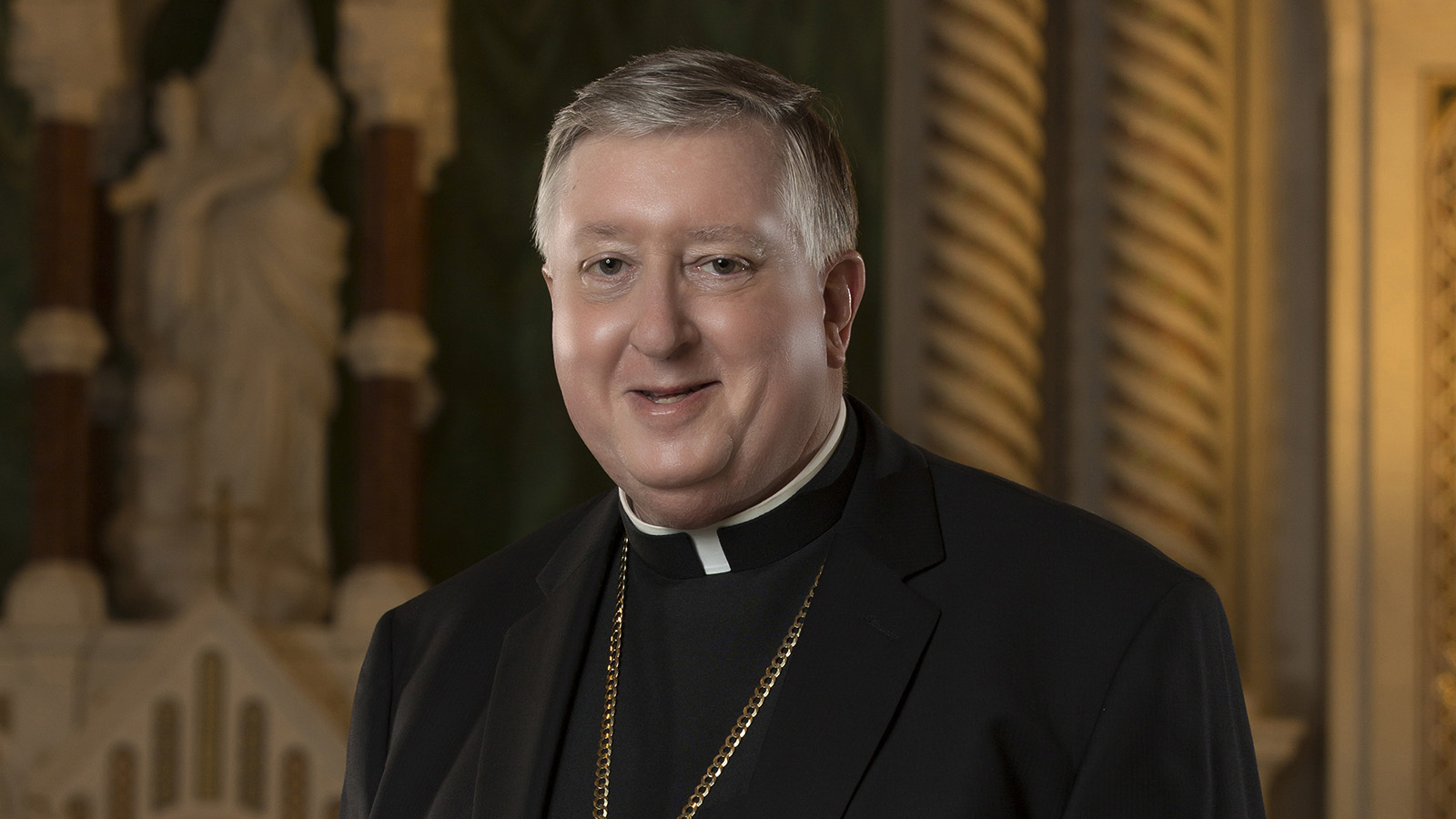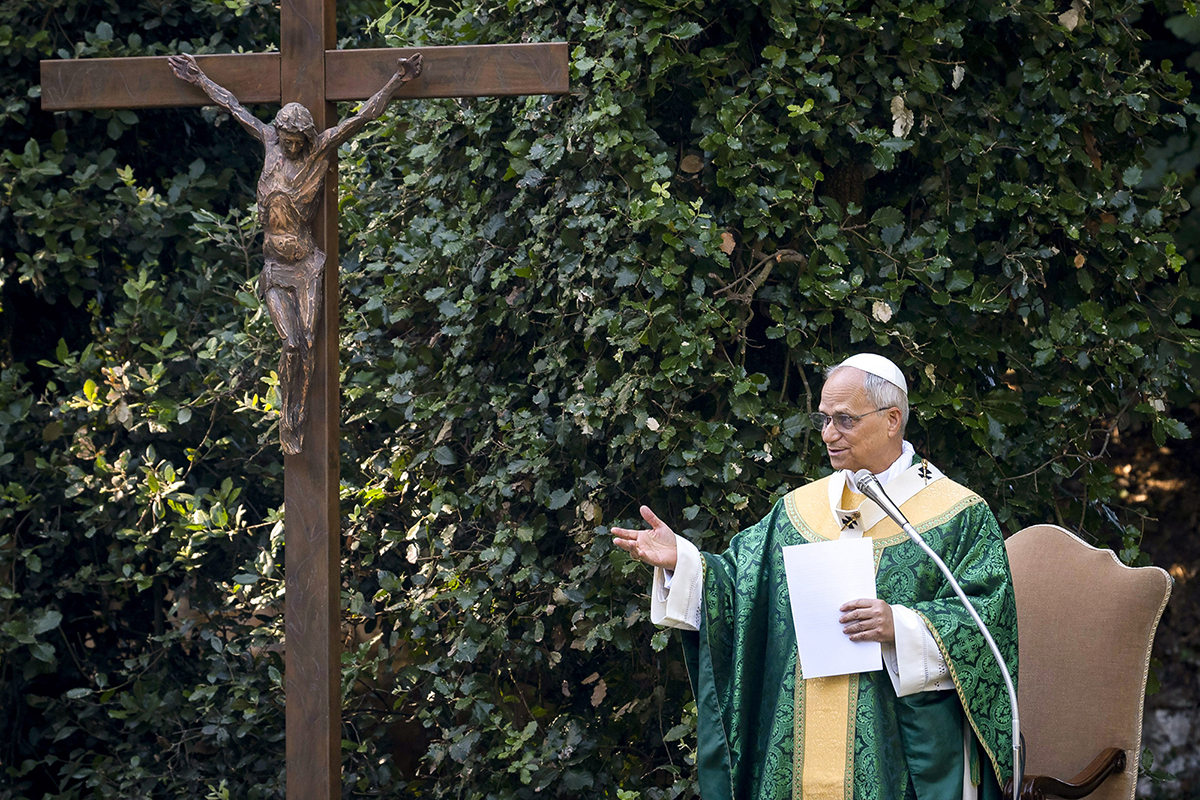SERVE THE LORD WITH GLADNESS | Jesus and Mary show suffering can bring about glory
The cross shows us that ‘self-emptying’ is a better way to deal with suffering than the world’s ways

Dear brothers and sisters in Christ,
We celebrate two important feasts this week: the Exaltation of the Holy Cross (Sept. 14) and Our Lady of Sorrows (Sept. 15).
These feasts say something important to the general cultural attitude that everything needs to be happy and comfortable — and if anything is not, we either need to end it immediately or deny that there’s a problem. This is the world’s way of dealing with suffering, but it’s not working and it won’t ever work. The feasts this week show us a better way.
In Philippians 2, St. Paul speaks of Christ “emptying” Himself. The Greek word there is “kenosis.” “Self-emptying” is the best translation of the Greek word. But self-humbling and self-gift are important elements of what the term means with reference to Jesus’ life.
St. Paul says that because Christ underwent kenosis — emptying Himself, humbling Himself, making a gift of Himself even to the point of death — God exalted Him. Kenosis is, paradoxically, the path to glory.
We see this in the Gospel of John as well. John’s Gospel has two parts: the book of signs (chapters 1-12) and the book of glory (chapters 13-20). The centerpiece of the book of glory is, paradoxically, the cross. Following the rules of the world thus doesn’t make any sense — the cross is a one-way ticket to misery. Following the rules of God, however, makes perfect sense — the cross is the path to glory. A note in The Great Adventure Bible says that suffering is “the divinely appointed means of progress toward God.”
The feast of Our Lady of Sorrows sheds important light on our approach to suffering as well. One of the options for the day is to read (or sing) the sequence known as the “Stabat Mater” — frequently sung as “At the Cross Her Station Keeping.” Mary stands by the cross. She can’t make her son’s suffering stop. But she doesn’t turn away, or attempt to minimize it. She never gives in to the covert denial of the platitude: “It’s all good.” She gives strength to her son, and helps Him endure His suffering, by standing by Him. It’s the same kind of strength that Blessed Franz Jaegerstaetter’s wife gives to him in the film “A Hidden Life”: in standing by him, she gives him strength to see his trials through to the end. It’s a spiritual kind of labor pain, and it’s very fruitful.
This pattern is reflected in the first beatitude, blessed are the poor in spirit — those who humble themselves; the kingdom of heaven is theirs — they will be exalted. The beatitude contains an invitation: The relationship between kenosis and exaltation isn’t just something that happened to Jesus, it’s meant to be the pattern of every Christian life. As the Catechism says, Jesus wants us to live the mysteries of His life, and He wants to live them again in us. (Catechism of the Catholic Church, 521)
This week, let’s think about the passion of Jesus and the compassion of Mary. Together they offer us a more fruitful way to deal with suffering. They show us that suffering, rather than being a one way ticket to misery, can actually be a bridge to glory.





